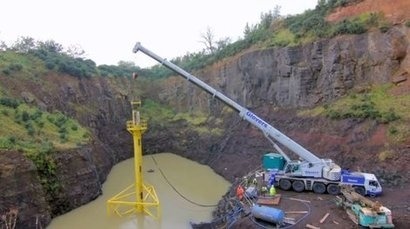
The two companies are working in partnership to deliver a mooring system for the project which will incorporate the SR2000 floating tidal turbine and use rock anchor drilling technology. The turbine will be deployed at the European Marine Energy Centre (EMEC) sometime this year.
McLaughlin & Harvey, with support from SeaRoc, has secured approximately £1 million of funding through a collaborative grant arrangement with the Carbon Trust, under the Scottish Government Marine Renewables Commercialisation Fund (MRCF), and Invest Northern Ireland. The project will demonstrate the company’s remotely operated seabed drilling technology which has been part of an ongoing R&D programme. Meanwhile, SeaRoc has developed a marine operations strategy which uses existing and cost-effective marine equipment to provide a platform at sea from which McLaughlin & Harvey can deploy their equipment and carry out their drilling works in a safe and efficient manner.
The project partners will each make a contribution in-kind towards financing the project and Scotrenewables Tidal Power Ltd., developers of the SR2000 tidal turbine, will contribute over £450,000 in cash.
“We are very excited about this project, which has been part of our ongoing in-house R&D programme for a number of years” said Adam Holland, Marine Renewables Manager, McLaughlin & Harvey. “Our goal here is to demonstrate a step change reduction in the cost of marine renewable energy installations using conventional, civil engineering techniques to deliver foundations in a novel application.”
Nick Murphy, Head of Wave and Tidal Projects, SeaRoc, added that the project brings together the complementary skills of the two companies to deliver an integrated design for marine energy projects.
Scottish Energy Minister, Fergus Ewing, said that although harnessing the power of the sea is challenging, more so than ever envisaged, the Scottish Government is committed to building a successful marine industry in Scotland. Government and industry working collaboratively and across borders to develop innovative new concepts will play a crucial part of cost reduction in the first array projects.
According to Barry Johnston, Chairman, Scotrenewables Tidal Power Ltd, the SR2000 project gives a perfect opportunity to trial rock bolt anchors in a real life tidal energy site.
The drilled rock anchor will help to significantly reduce the foundation and installation costs for marine renewable energy devices. At present, these costs account for more than 40 percent of capital expenditures
For additional information:

